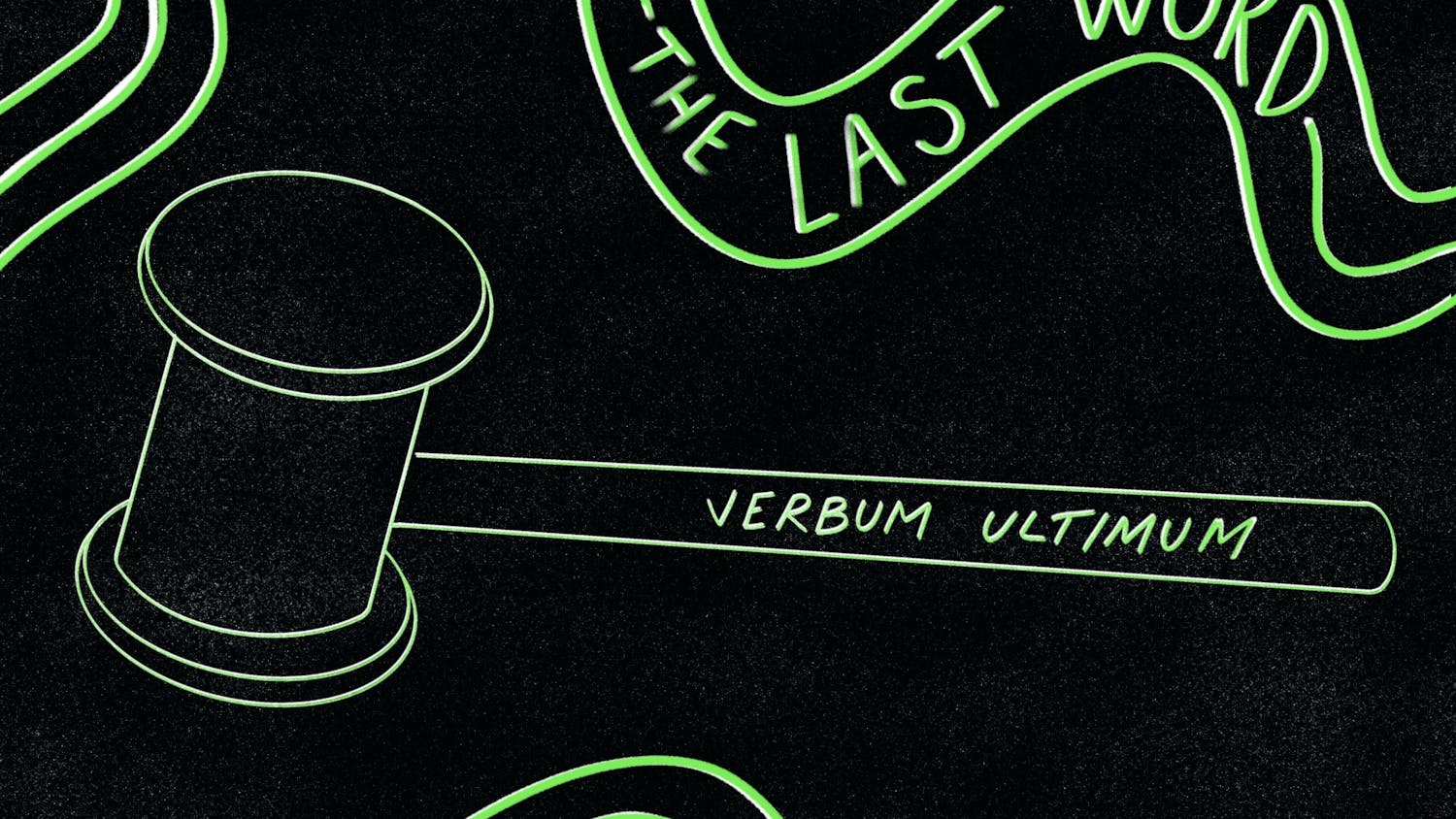Ona wall of the Bartlett Language Resource Center hangs a reproduction of the Rosetta Stone. As we blithely go about our respective affairs, it is difficult to remember the story that this black piece of basalt has to tell, and the exertions men have made to decipher it.
The importance of the Rosetta Stone is in the crucial role it played in the decipherment of the Egyptian hieroglyphic script. Egypt, for more than 3,500 years the envy and terror of much of the ancient world, had come under the influence of what had once been a city-state of rude farmers: Rome. Thus, as is inevitable with empires, Egypt went into decline, its pharoanic glories claimed by the desert sands.
By the fourth-century, all knowledge of hieroglyphic writing had disappeared. This state of ignorance would be maintained for 15 centuries. It is a legacy of this ignorance that the names Akhenaton, Zoser, Rameses and Seti ring no bells for most of us. Yet, if success was measured by longevity, Egyptian civilization was far more successful than its Grecian or Rome counterparts.
The circumstances under which the Rosetta Stone was found are worth telling. Napoleon, of whom the quote "I am become death, destroyer of worlds" many of his contemporaries might have thought fitting, had an interest in the promotion of learning, and on his Egyptian campaign of 1798-1799 he took with him an armada of soldiers and antiquarians to study the history of Egypt in situ. This presented unprecedented opportunities for discovery, and the stone was found at Rosetta (called Rashid in Arabic) in August 1799 by a group of soldiers conducting engineering works. These circumstances might prove instructive to those who believe laissez-faire should be the rule in all things, even support for research.
It would be hard to describe the intensity of the excitement which this discovery created in learned circles. Scholars had accurately guessed that the three different inscriptions on the stone were identical in meaning, and a tremendous rush was on to use the Greek inscriptions to decipher the demotic and hieroglyphic ones.
The phenomenon of quackery, however we might like to disagree, is not a new one, and most early efforts were of this sort. All kinds of metaphysical and religious meanings were ascribed to the inscriptions on the Rosetta Stone. The 19th-century equivalent of today's New Age travelers dominated discourse on the meanings of the strange symbols on the stone.
We can only be grateful that a stubborn few held to the rational, scientific method, and the discoveries of the British physicist Thomas Young were particularly noteworthy. Young first realized, in 1814, that the cartouches inscribed on the stone contained royal names. Beyond this, and the publication of a translation of the Demotic script, he could not go.
The solution of the hieroglyphic enigma awaited the efforts of the gifted Jean Francois Champollion. He had published a book at 12 and was made a professor at the Lycee of Grenoble at age 19. On meeting the famous mathematician Fourier, the 11-year-old Champollion had self-assuredly declared that he would be the one to clear up the mystery of the hieroglyphics.
For all of Champollion's brilliance and confidence, the road to success was not an easy one. It was to take Champollion at least 14 years of devoted effort to achieve his goal, 14 years of continuously poor health and penury. So hard up was the man that he was unable to appear in public for a lack of decent clothing. He was in many ways the archetypal Romantic genius.
Even when Champollion had succeeded there were further obstacles. Then as now, academe was rife with jealousy and dogmatism, and his discoveries met with bitter opposition. It is not always the case that truth wins out over vitriol. But this was one such occasion, and he was eventually given his due.
A few comments must be made here. The steadfastness of character which Champollion displayed while deciphering the Rosetta Stone should be an example to all, especially to this self-styled "Slacker" generation. It must also be noted that he was no well-rounded gentleman in the Dartmouth tradition: Egyptology was all he lived for. Whether Champollion could have achieved as much as he did if he had been well-rounded is a doubtful proposition.
The crowning glory of the great decipherer's career was his 1828-1829 expedition to Egypt. Despite knowing the country from end to end, Champollion had in fact never set foot in Egypt. What then must he have felt on seeing the Valley of the Kings? What emotions must have coursed through him on setting eyes on the temple of Isis at Dendara? One can only hazard that it was a mixture of joy and awe. This visit was a fitting tribute to a lifetime of obsession.
We cannot all be Champollions and not all quests can be as full of romance as his was, but we can at least draw inspiration from the story of the Rosetta Stone.


